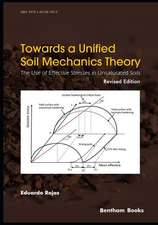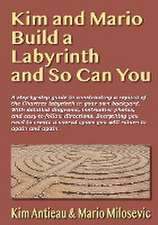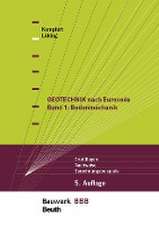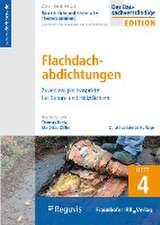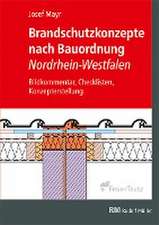Seismic Design of Buildings to Eurocode 8
Editat de Ahmed Elghazoulien Limba Engleză Hardback – 13 dec 2016
As well as an update throughout, this second edition incorporates three new and topical chapters dedicated to specific seismic design aspects of timber buildings and masonry structures, as well as base-isolation and supplemental damping. There is renewed interest in the use of sustainable timber buildings, and masonry structures still represent a popular choice in many areas. Moreover, seismic isolation and supplemental damping can offer low-damage solutions which are being increasingly considered in practice.
The book stems primarily from practical short courses on seismic design which have been run over a number of years and through the development Eurocode 8. The contributors to this book are either specialist academics with significant consulting experience in seismic design, or leading practitioners who are actively engaged in large projects in seismic areas. This experience has provided significant insight into important areas in which guidance is required.
| Toate formatele și edițiile | Preț | Express |
|---|---|---|
| Paperback (1) | 391.29 lei 6-8 săpt. | |
| CRC Press – 14 ian 2019 | 391.29 lei 6-8 săpt. | |
| Hardback (1) | 1233.07 lei 6-8 săpt. | |
| CRC Press – 13 dec 2016 | 1233.07 lei 6-8 săpt. |
Preț: 1233.07 lei
Preț vechi: 1503.75 lei
-18% Nou
235.94€ • 247.01$ • 195.23£
Carte tipărită la comandă
Livrare economică 05-19 aprilie
Specificații
ISBN-10: 1498751598
Pagini: 382
Ilustrații: 194
Dimensiuni: 178 x 254 x 2 mm
Greutate: 0.88 kg
Ediția:Revised
Editura: CRC Press
Colecția CRC Press
Public țintă
Professional Practice & DevelopmentCuprins
Notă biografică
Recenzii
-- Phillip G. Thurlow in Proceedings of the Institution of Civil Engineers: Structures and Buildings
"It does not only provide a great summary of the current provisions, but it tries to systematically bridge over the difficulties arising from the complexity of the codes, and explains their application via illustrative numerical examples. Thus, it is a perfect selection for practicing engineers."
-- László Gergely Vigh, Budapest University of Technology and Economics
"The main strength of this book is its intermediate positioning between a classical text book on earthquake engineering and an illustrated commentary of the European standard Eurocode 8. It is therefore perfectly fitted for practicing engineers as well as advanced post-graduate students in search of relevant and well-structured information on how to perform the seismic design of building structures and their foundation."
-- Hervé Degée, Hasselt University, Belgium
"Given the critical mass of world class academics and experienced practitioners contributing to the writing of the book it is such an authoritative source of reference which will be highly cited. The comprehensive coverage of the subject matter is an important feature which is un-paralleled by any publications in this field."
-- Nelson Lam, University of Melbourne, Australia
"As this approach is illustrated by clear design examples, the structural engineer will find a precious help for a better understanding and application of the code."
-- Pierre-Olivier Martin, CTICM, France
"This book is a must have for any practicing structural engineer’s library. It is easy to refer to and gives great references for deeper research. With that in mind, it would also be a perfect addition to postgraduate structural engineering courses."
-- Gregory Penelis, Penelis Consulting Engineers, Greece
"The book is an excellent introduction in seismic design according to Eurocode 8 for practicing structural engineers and civil engineering students. The reader is provided with the theoretical background, which enables them to understand, interpret and apply the code for practical applications."
-- Max Gündel, Wölfel Engineering, Germany
"The book offers ... a very good balance between general concepts needed for understanding the rather complex subject of seismic design, and practical reference to code provisions. The topics cover very well most common cases needed in design, and are clearly structured.
-- Aurel Stratan, Politehnica University of Timisoara, Romania
"Application of code procedures using design examples is an added value for professionals that may have natural difficulty in interpreting and applying complex seismic design code provisions."
-- Carlos Rebelo, University of Coimbra, Portugal
"The new chapters on seismic design of masonry and in particular the one on timber structures cover fields which are little familiar to designers, though these types of construction are either very common, like masonry, or quite new but growingly used, like timber or base isolation."
-- André Plumier, University of Liège, Belgium
"Recommended to give training courses to design engineers and to students of earthquake engineering courses in civil engineering."
-- Rita Bento, Instituto Superior Técnico, Portugal
"This is an excellent treatment of the seismic design of buildings to Eurocode 8. It is a must for practicing structural engineers in Europe and in countries where the Eurocodes are used for the seismic structural design of buildings. The book will also be an essential item for senior researchers looking to find out the state of the art in seismic structural engineering."
-- Brian Uy, University of New South Wales, Australia
"This book will surely be helpful, for example, in the event of seismic actions to preserve a culturally significant building or to prevent the collapse of a hospital. Its publication can undoubtedly be considered a worthwhile endeavour and civil engineers at all grades who are involved in seismic design will find it a handy and well-used reference."
-- Phillip G. Thurlow in Proceedings of the Institution of Civil Engineers: Structures and Buildings
"It does not only provide a great summary of the current provisions, but it tries to systematically bridge over the difficulties arising from the complexity of the codes, and explains their application via illustrative numerical examples. Thus, it is a perfect selection for practicing engineers."
-- László Gergely Vigh, Budapest University of Technology and Economics
"The main strength of this book is its intermediate positioning between a classical text book on earthquake engineering and an illustrated commentary of the European standard Eurocode 8. It is therefore perfectly fitted for practicing engineers as well as advanced post-graduate students in search of relevant and well-structured information on how to perform the seismic design of building structures and their foundation."
-- Herv eg Hasselt University, Belgium
"Given the critical mass of world class academics and experienced practitioners contributing to the writing of the book it is such an authoritative source of reference which will be highly cited. The comprehensive coverage of the subject matter is an important feature which is un-paralleled by any publications in this field."
-- Nelson Lam, University of Melbourne, Australia
"As this approach is illustrated by clear design examples, the structural engineer will find a precious help for a better understanding and application of the code."
-- Pierre-Olivier Martin, CTICM, France
Descriere
This book focuses on the seismic design of building structures and their foundations to Eurocode 8. It covers the principles of seismic design in a clear but brief manner and then links these concepts to the provisions of Eurocode 8. It addresses the fundamental concepts related to seismic hazard, ground motion models, basic dynamics, seismic analysis, siting considerations, structural layout, and design philosophies, then leads to the specifics of Eurocode 8.
Code procedures are applied with the aid of walk-through design examples which, where possible, deal with a common case study in most chapters. As well as an update throughout, this second edition incorporates three new and topical chapters dedicated to specific seismic design aspects of timber buildings and masonry structures, as well as base-isolation and supplemental damping. There is renewed interest in the use of sustainable timber buildings, and masonry structures still represent a popular choice in many areas.
Moreover, seismic isolation and supplemental damping can offer low-damage solutions which are being increasingly considered in practice. The book stems primarily from practical short courses on seismic design which have been run over a number of years and through the development Eurocode 8. The contributors to this book are either specialist academics with significant consulting experience in seismic design, or leading practitioners who are actively engaged in large projects in seismic areas.
This experience has provided significant insight into important areas in which guidance is required.


